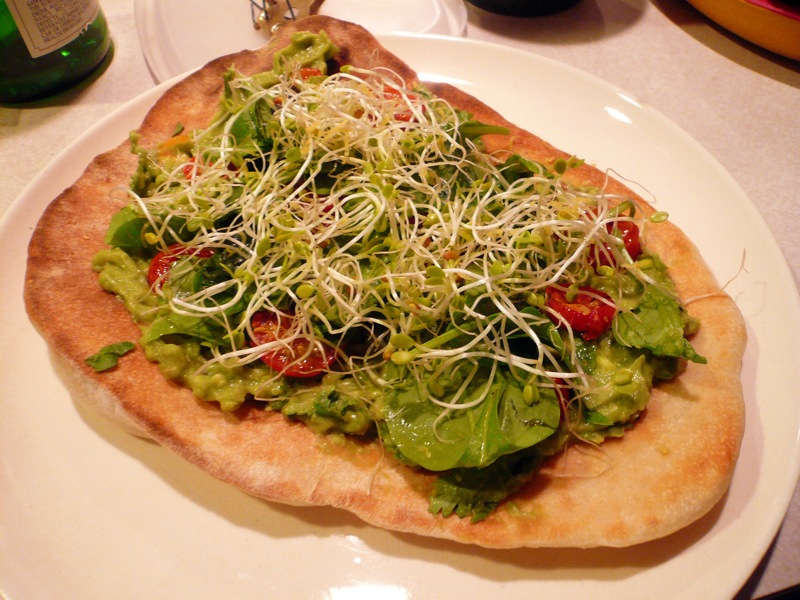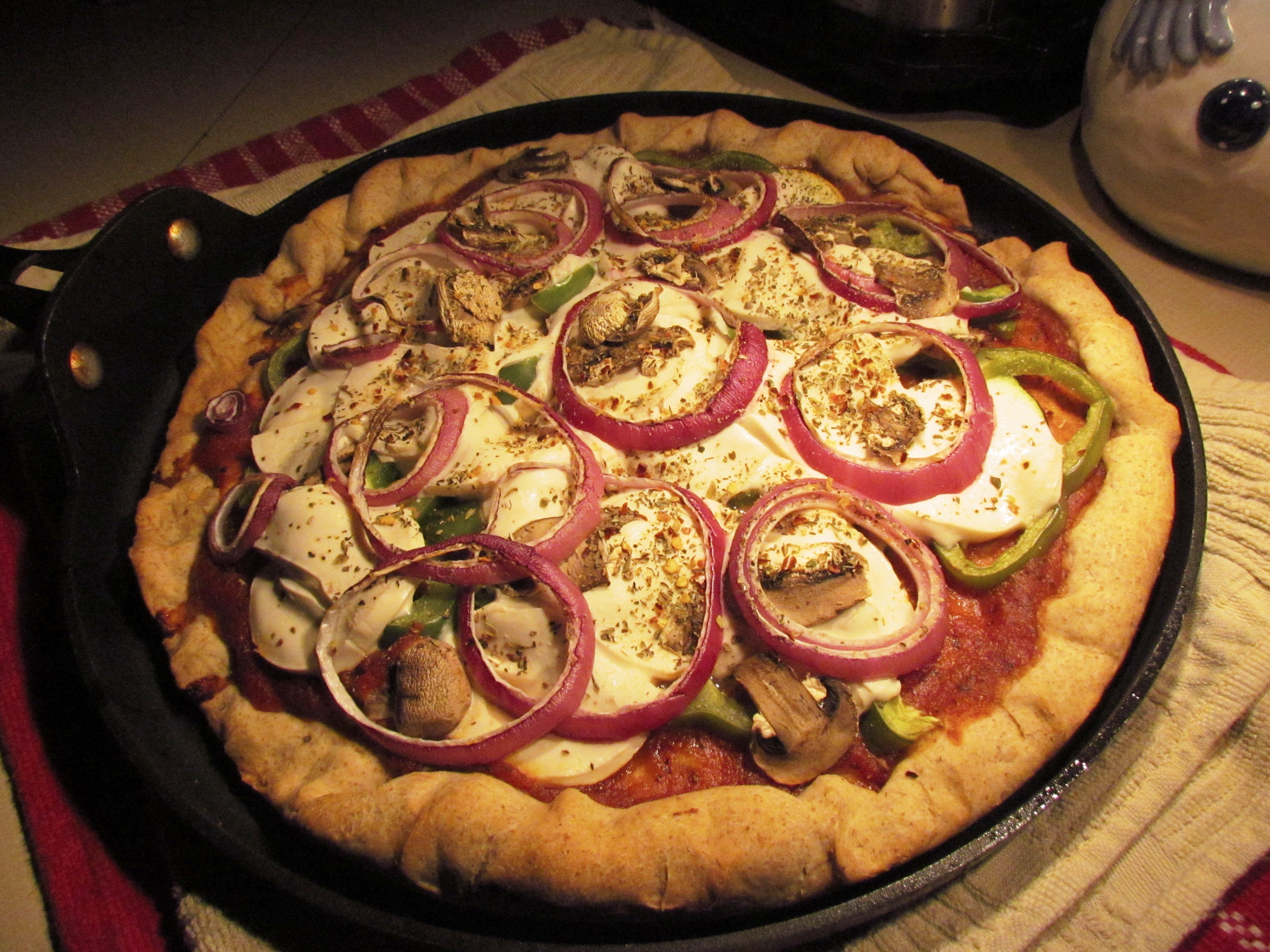Gourmet Pizza Recipes Biography
source(google.com.pk)
Costa Anastasiadis, founder and managing director of gourmet pizza chain Crust, never wanted to be a pizza entrepreneur.
When he was 19, Anastasiadis was a talented soccer player and headed to the rich European leagues to try his luck. He eventually landed a professional contract with English club Scarborough FC and later played in Greece.
But things were not going well at home. The family hotel business was struggling and his mother had developed a terminal illness. Anastasiadis had little choice but to abandon his dream. “The idea of being a professional football player was very romantic, but reality hit,” he says.
When Anastasiadis arrived home at the age of 22, things had not improved. The family decided to make a bold decision – the family home was sold off, business debts were paid off and Anastasiadis, as the oldest son, was given the job of starting a new business to help the family get back on their feet. “We knew that the only way out was cashflow, and we just had to grind our way out.”
In 2001, he leased a small 45-square-metre store in the Sydney suburb of Annandale with the idea of starting a gourmet deli. But he eventually decided to return to the pizza business, which he had learnt while managing the wood-fired pizza restaurant at his parents’ hotel.
Despite having just $60,000 in start-up capital and an admittedly amateur strategy – Anastasiadis came up with the menu in his grandparents’ living room, used old house tiles in his shop fit-out and hauled in his brother, sister and cousins as staff members – the business did well and cashflow far exceeded expectations. Anastasiadis says the keys were a visually exciting shop (with the fresh ingredients prominently displayed) and good quality pizzas. “The product was good, and we kept making it better,” he says.
While winning over the customers was relatively easy, Anastasiadis soon realised that winning over suppliers would not be as easy. “Here I was, 22-years-old and these suppliers were selling me thousands of dollars of stock,” Anastasiadis says. His strategy was to launch a charm offensive, making sure he was easy to deal with and always paying on time. “That was the main thing – just being a good payer.”
Within four years, Anastasiadis had opened four Crust Gourmet Pizza stores around Sydney and it was time to take the business to the next level and start franchising. Despite the fact his family had only recently escaped from their financial problems, Anastasiadis and his business partner, Michael Logos, decided to use their stores as capital to fund the franchising move. “I always looked at it as a low-risk move. My philosophy has been that I am young enough to take a hit and get back up again.”
The risk worked. Within six months, six more Crust stores had been rolled out. There are now 17 Crust stores in Sydney and Melbourne; five of these are company owned. Revenue from the chain’s stores almost doubled in 2006-07 to $11.856 million. Anastasiadis is confident of similar growth this financial year, although he admits that the periods after an interest rate rise have been a bit quiet.
It costs between $250,000 and $350,000 to set up a store, depending on the size of the premises. That includes a $45,000 franchise fee. “We’re still getting a lot of interest from franchisees,” Anastasiadis says. There are currently about 14 stores planned or under construction, with the bulk of these to be open by the end of the 2008. By the end of 2009, he wants 40 stores.
But Anastasiadis is very aware that the Crust chain can only ever get so big. Partly that’s a function of the gourmet brand, in that he and Logos are very keen to ensure the quality of their product and the quality of their franchisees remains high. Mainly it’s a function of the target market – given that the average large pizza costs around $22, Anastasiadis knows that there are some suburbs where a Crust store simply won’t work. “It’s not suited to every demographic. We are very aware of that,” he says. “We know that we are limited in what we can do, and that’s fine.”
Anastasiadis is already examining other ways to expand the business, such as setting up stores in shopping centres that could sell pizza by the slice.
Crust’s other great challenge is copy-cat competitors. “One of our regrets is that we didn’t seek professional advice on that sooner,” Anastasiadis says. In order to separate itself from the pizza pack, Crust announced in February the introduction of six pizzas that have been awarded the Heart Foundation’s tick of approval.
Anastasiadis says the 12-month process required to earn the ticks was grueling (Crust also pays just over $20,000 a year to the foundation for the right to use the tick) but worth it. “It was hard, but I wouldn’t change it for anything. The reaction from customers has been great, and the media attention didn’t hurt either.”
Gourmet Pizza Recipes
When he was 19, Anastasiadis was a talented soccer player and headed to the rich European leagues to try his luck. He eventually landed a professional contract with English club Scarborough FC and later played in Greece.
But things were not going well at home. The family hotel business was struggling and his mother had developed a terminal illness. Anastasiadis had little choice but to abandon his dream. “The idea of being a professional football player was very romantic, but reality hit,” he says.
When Anastasiadis arrived home at the age of 22, things had not improved. The family decided to make a bold decision – the family home was sold off, business debts were paid off and Anastasiadis, as the oldest son, was given the job of starting a new business to help the family get back on their feet. “We knew that the only way out was cashflow, and we just had to grind our way out.”
In 2001, he leased a small 45-square-metre store in the Sydney suburb of Annandale with the idea of starting a gourmet deli. But he eventually decided to return to the pizza business, which he had learnt while managing the wood-fired pizza restaurant at his parents’ hotel.
Despite having just $60,000 in start-up capital and an admittedly amateur strategy – Anastasiadis came up with the menu in his grandparents’ living room, used old house tiles in his shop fit-out and hauled in his brother, sister and cousins as staff members – the business did well and cashflow far exceeded expectations. Anastasiadis says the keys were a visually exciting shop (with the fresh ingredients prominently displayed) and good quality pizzas. “The product was good, and we kept making it better,” he says.
While winning over the customers was relatively easy, Anastasiadis soon realised that winning over suppliers would not be as easy. “Here I was, 22-years-old and these suppliers were selling me thousands of dollars of stock,” Anastasiadis says. His strategy was to launch a charm offensive, making sure he was easy to deal with and always paying on time. “That was the main thing – just being a good payer.”
Within four years, Anastasiadis had opened four Crust Gourmet Pizza stores around Sydney and it was time to take the business to the next level and start franchising. Despite the fact his family had only recently escaped from their financial problems, Anastasiadis and his business partner, Michael Logos, decided to use their stores as capital to fund the franchising move. “I always looked at it as a low-risk move. My philosophy has been that I am young enough to take a hit and get back up again.”
The risk worked. Within six months, six more Crust stores had been rolled out. There are now 17 Crust stores in Sydney and Melbourne; five of these are company owned. Revenue from the chain’s stores almost doubled in 2006-07 to $11.856 million. Anastasiadis is confident of similar growth this financial year, although he admits that the periods after an interest rate rise have been a bit quiet.
It costs between $250,000 and $350,000 to set up a store, depending on the size of the premises. That includes a $45,000 franchise fee. “We’re still getting a lot of interest from franchisees,” Anastasiadis says. There are currently about 14 stores planned or under construction, with the bulk of these to be open by the end of the 2008. By the end of 2009, he wants 40 stores.
But Anastasiadis is very aware that the Crust chain can only ever get so big. Partly that’s a function of the gourmet brand, in that he and Logos are very keen to ensure the quality of their product and the quality of their franchisees remains high. Mainly it’s a function of the target market – given that the average large pizza costs around $22, Anastasiadis knows that there are some suburbs where a Crust store simply won’t work. “It’s not suited to every demographic. We are very aware of that,” he says. “We know that we are limited in what we can do, and that’s fine.”
Anastasiadis is already examining other ways to expand the business, such as setting up stores in shopping centres that could sell pizza by the slice.
Crust’s other great challenge is copy-cat competitors. “One of our regrets is that we didn’t seek professional advice on that sooner,” Anastasiadis says. In order to separate itself from the pizza pack, Crust announced in February the introduction of six pizzas that have been awarded the Heart Foundation’s tick of approval.
Anastasiadis says the 12-month process required to earn the ticks was grueling (Crust also pays just over $20,000 a year to the foundation for the right to use the tick) but worth it. “It was hard, but I wouldn’t change it for anything. The reaction from customers has been great, and the media attention didn’t hurt either.”






